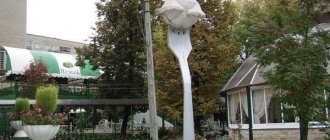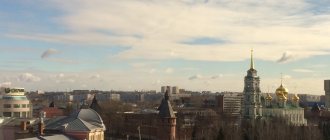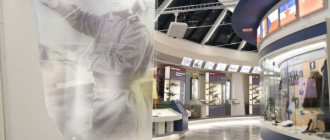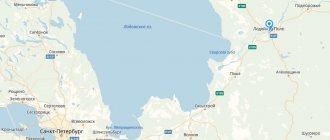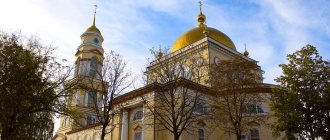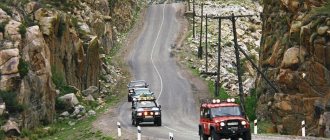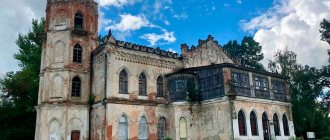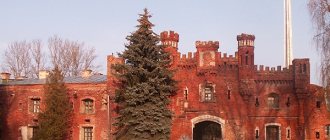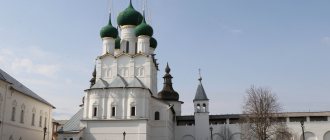A one-day tourist trip to Tula is a great way to have fun and see new places and attractions. This travel destination is often chosen by residents of nearby regions, including Moscow.
- Museum "Tula Gingerbread"
- Pedestrian street Metallistov
- Exotarium
- Museum-estate of L. N. Tolstoy “Yasnaya Polyana”
From the capital of Russia to the city of gunsmiths it takes only about 3 hours. You can leave early to get to Tula and spend just one day exploring the local museums and the Kremlin. By the way, there are also museums dedicated to the famous symbols of the city. It is unlikely that anyone has not heard the combination “Tula gingerbread” or the saying about “Tula and its samovar.” There is also a weapons museum in the city. So there is definitely something to see and where to walk.
Tula - the city of gingerbread and craftsmen
Of course, you can spend more time driving around the entire region, because it was in these parts that Tolstoy, Veresaev, and Gleb Uspensky were born. In this article we will try to help you create an itinerary for a one-day visit.
Route around Tula for 1 day
Sightseeing can be done quite quickly. Walk around the main tourist spots, take a series of memorable photographs, and devote the rest of the day to exploring the exhibitions of local museums. We can say that this is precisely what becomes the main goal of tourists who come to Tula. So, here is the route option we offer you. You should start by visiting the Tula Gingerbread Museum and the Museum of Weapons. Then we follow in the direction of Metallistov Street and the Church of the Annunciation of the Blessed Virgin Mary. The Kazan embankment and the Tula Kremlin are located nearby, which we definitely recommend visiting.
After this, you can go to the samovar museum. Next on our route are Lenin Square and Lenin Avenue. We suggest finishing the walk with a rest in the central park named after Belousov. If you prefer a more active holiday with shopping elements to a quiet time surrounded by trees, then we offer you another final point of the route. This is the Likerka Loft shopping and entertainment space, which can be reached on foot along Lenin Avenue. This space, which was once warehouses for a distillery, now houses shops, bars and cafes. If you want, the route we have proposed can be taken in reverse order.
Tula is a great option for visiting for 1 day
Tourists usually begin their acquaintance with the city with their arrival at the Moskovsky Station. Next, guests of Tula either go sightseeing by public transport or walk. For example, you can walk to the local Kremlin from the station in 40 minutes.
Tula Kremlin
www.museum-tula.ru
Let's start the journey with the main attraction of the city - the Tula Kremlin. Here you can not only take a walk and look at the Kremlin from the inside, but also organize an excursion. You can choose from several guided sightseeing tours or view the exhibitions located in the atrium. And after the excursion into history, don’t forget to stop by the souvenir shop for traditional sweets or a samovar (where would we be without it!).
Main attractions of Tula
Tula Kremlin
In the center of many ancient Russian cities, historical fortresses have been preserved, which invariably attract the attention of tourists. Tula is one of these cities and is rightfully proud of its Kremlin. This is the main attraction, the condition of which is carefully monitored - the area is clean and well-groomed. It is very pleasant to walk around the Tula Kremlin, studying historical and architectural monuments, or just relax, sitting on some bench.
Territory of the Tula Kremlin
According to reviews from tourists, two hours is enough to see all the sights of the Kremlin. What exactly is worth seeing? Firstly, the ancient fortress is interesting in itself: the walls and towers have retained their appearance since the 16th century without significant changes. The three-meter walls of the Kremlin stretch along the perimeter for about a kilometer. Their strength is ensured by a fairly strong foundation, extending more than 8 meters into the ground. The materials used to build the walls were red brick and white limestone. The architecture of the fortress combined both native Russian construction styles and borrowed ones. An example of European influence is the so-called “dovetails” that line the walls. These elements have traditionally been popular among Italian architects.
In addition to visiting the walls and towers of the Tula Kremlin, it is worth exploring other buildings included in its architectural ensemble. This is the Holy Assumption Cathedral, built in the 18th century, and the Epiphany Cathedral, built in the 19th. Also of interest are the shopping arcades and the building of the city's first power plant.
Holy Assumption Cathedral
While walking around the Kremlin, you will have the opportunity to purchase memorable souvenirs in local artisan shops. There are also food stalls for those who want to refresh themselves. From time to time, the Tula Kremlin hosts various activities for tourists, including master classes.
Assumption and Epiphany Cathedrals of the Tula Kremlin
As we have already written, there are two cathedrals on the territory of the Tula Kremlin. One of them is Uspensky
, is located in the very center of the ancient fortress. It was built in the 18th century with funds raised by Tula merchants. But before that there were other temples in the same place. First, in the 16th century, a wooden structure appeared, and then a stone one. None of them survived. But the Assumption Cathedral stands strong and arouses great interest among tourists. It has original architecture, and unique icons are stored inside. The history of the temple is also interesting. For some time, the hearse with the body of Emperor Alexander I was located in it, and in the same cathedral the militias who went to fight Napoleon received blessings.
Assumption Cathedral in Tula
Another religious building, located in the Tula Kremlin, does not currently belong to the church. This is the Epiphany Cathedral
, which now houses
the Museum of Weapons
. Quite an unexpected change of role for a building erected in the mid-19th century. But the building is no stranger to change; during the Soviet period of history it underwent extensive reconstruction.
Epiphany Cathedral
Monument to Tula gingerbread
Tula gingerbread, as befits one of the main symbols of the city, took pride of place in the very center - on Lenin Square. Of course, we are not talking about the sweetness itself, but about its sculptural version. The monument was erected in 2014 and has since been popular among tourists. It would be a mistake to come to Tula and not take a photo with a giant bronze gingerbread.
Monument to Tula gingerbread
Monument to Lefty
Many people have heard about the legendary Lefty. But not everyone knows that this character, created by writer Nikolai Leskov, is a symbol of Tula. And since it’s a symbol, it means a monument has been erected. Following this logic, the city decided to install a sculpture dedicated to the talented master. Initially, it appeared on the territory of the Tulamashzavod in 1989, but 20 years later the monument changed its place of registration. Now it is located on the embankment of the Upa River.
Left-handed - a symbol of working skill
Monument to Peter I
Peter I made a significant contribution to the history of the city. It was by his decree that the construction of a state-owned arms factory began in Tula. This enterprise, which began operations back in 1712, is now considered the oldest arms factory in the country. Needless to say, the residents remember very well, thanks to whom Tula subsequently received the title of weapons capital. That is why a sculpture of the Russian emperor appeared in the city. First, it was installed on the territory of that same plant, and then moved to a park located nearby so that anyone could have access to it.
Monument to Peter the Great
Stories, routes and tourist tips
To understand what to expect from a trip to the gingerbread capital in the cold season, read reviews from tourists. In winter, Tula in 2 days is a popular trip option to make time for the historical city center and main museums, some go to country estates. Read stories from travelers with routes and tips for organizing a trip, look at real photos of Tula in winter - all this will help you prepare for your independent trip.
- Irina Morozova - story “City of Gingerbread, Samovars and Weapons”
- Anna Gorelova – “From the Moscow region to Tula with children”
- Lyudmila - photo album “Tula without samovars and gingerbread”
- Svetlana Vorobyeva - photo album “Tulu-la or Snowy Tula in January 15th”
- Julia – photo album “Yasnaya Polyana”
Reviews from tourists about traveling to Tula
Assumption Cathedral in the Kremlin Photo: © Svetlana Vorobyeva
Museums of Tula
Next, we suggest that you familiarize yourself with an overview of Tula museums, which display a huge number of exhibits. By studying these artifacts, you can study more deeply the history of the city and the region.
Museum "Tula Gingerbread"
The most “delicious” will definitely be a visit to the Tula Gingerbread Museum. Already from the name it is clear that here you will be presented with the history of the main sweet and symbol of the city. Here they will tell you and show you the secrets of producing the legendary Tula gingerbread cookies. The museum's exposition is housed in two halls, and among the exhibition objects there is an abundance of a wide variety of gingerbread. There are personalized ones, custom ones, and gingerbreads that were baked for special dates or holidays. You can even see a 50-kilogram gingerbread, which has no analogues in the world. All these are not just sweets, but real exhibits that reflect the history and culture of the region. Considering that many gingerbread cookies have texts and images, they can even be read like a book. An educational historical book.
Inside the Tula Gingerbread Museum
As we wrote, this is the most delicious of all the museums in Tula, and not only because you can look at the sweets. Here they will give you a taste. Not those that are exhibits, but others, freshly baked. They are made directly in the workshop located at the museum. Tea drinking will be a great end to the excursion.
Weapons museum
The local weapons museum is called one of the oldest museums in the country. It reflects the many years of skill of Tula craftsmen and blacksmiths, who could create not just a tool, but an entire work of art from an ordinary piece of iron. In these parts there were deposits of brown iron ore, which made the location of the city very favorable for such production.
The building of the Tula State Museum of Weapons
Since 2012, a new museum building has been operating in Tula, which is located in the Zarechensky district, on the Dreyer embankment. The facade of this building has an unusual shape - the shape of an ancient helmet. The museum presents the exhibition “History of small arms and bladed weapons from the 14th century to the present.” It is complemented by “active” information stands that operate using touchscreen technology. This is very convenient for visitors, who will definitely appreciate the museum's modern approach to viewing the collection. With the help of an electronic assistant, you can familiarize yourself with the history of the creation of weapons, how they were used and how they were improved.
Museum exposition
In 2014, the exhibition “Steel Guardians” was launched. This is a presentation of Russian military equipment created in the second half of the 20th century. All weapons can be seen today, the exhibition is still open.
Museum "Tula Samovars"
We all know the truth that you shouldn’t go to Tula with your own samovar, because there are already enough of them here. You can see this at the Tula Samovars Museum, one of the most popular museums among tourists. It began its work in 1990 and over the past years has become very popular with city guests.
Its exhibition reflects the main stages in the development of local samovar production, from the end of the 18th century to the present. A significant place in the museum is occupied by memorial complexes created in honor of representatives of the real samovar dynasties - the Fomins, Shemarins, Batashevs.
Exhibits of the Samovar Museum
One of the museum's halls is organized very interestingly. It looks like a P.I. store. Kozlov, one of the famous local confectioners of yesteryear. The creators of the museum tried to recreate the atmosphere of this trading establishment.
The halls of the museum display samovars of various shapes and sizes. There are very tiny ones that can hold only a couple of drops of water, and there are also giants like a 70-liter pantry samovar. Here you can also see unique items like “children’s samovars”, which were presented to the family of Nicholas II, or the samovar of the Lisitsyn brothers, the owners of the first samovar workshop in the city.
Museum "Old Tula Pharmacy"
Fans of historical surroundings will be interested in looking into the old pharmacy building, which was erected at the end of the 19th century. The establishment operated as a pharmacy until 2011. Now you can’t buy medicine here, but you can explore various collections dedicated to witchcraft and herbal medicine. The exhibition display cases display elements of traditional medicine and pharmaceutical utensils in which medicines were previously prepared. They also introduce visitors to how pharmacists were trained in former times, and also conduct various master classes.
Interior of the pharmacy-museum
Museum "Tula Antiquities"
In Tula there is a branch of the Kulikovo Field museum complex. It is called “Tula Antiquities”, which accurately reflects its content. The exhibition includes an immersion into the historical environment of the 16th-18th centuries, into the life of local craftsmen, as well as into the atmosphere of the famous Battle of Kulikovo. Basically, the museum's collection is made up of finds that were made by the Tula archaeological expedition in the 90s of the 20th century. Another name of the museum is the Historical and Archaeological Museum named after N. I. Troitsky.
The Museum of Antiquity will be interesting for both children and adults
Museum "Necropolis of the Demidovs"
Once upon a time, the Demidov family was known far beyond Tula. Representatives of this legendary dynasty showed themselves in a variety of fields: as travelers, as writers, and as successful industrialists. The Demidovs were also actively involved in charity work. The opening of the memorial complex “Necropolis of the Demidovs” was timed to coincide with the 340th anniversary of the birth of Nikita Demidov. This event took place in 1996. The museum is located at st. Demidovskaya, 9. It is open all days except Monday. If you are interested in learning the history of this famous dynasty, a guide will come to your aid and will also tell you about places associated with the Demidov family.
Relics of the Demidov family
Entertainment
Exotarium
Address: st. Oktyabrskaya, 26 (old building), Belousov PKIO, bldg. 10 next to the Green Planet globe (new building). Phone: (old building), 8(4872)770-118 (new building) Website: https://tulazoo.ru Opening hours: Mon, Tue 12:00–18:00; Wed-Sun 10:00–18:00 Cost: prices for tickets and excursions here
The inhabitants of the Exotarium are snakes, frogs, fish, amphibians, and birds. If you're lucky, you'll see shed snake skin. Or feeding frogs. Or maybe you’ll get to one of the exhibitions on the museum’s territory.
Experimentation: a museum of entertaining sciences for adults and children
Address: Lenina Ave., 85, “Likerka Loft”, 2nd floor Telephone: +7 (4872) 770 - 213, +7 (961) 260-53-68 Website: https://experimentoria.ru Opening hours: from 10 :00-20:00 seven days a week Cost: children under 3 years old free, children over 3 years old and adults over 18 years old - 350 rubles. Family (2 adults + 2 children) - 1,250 rubles . Planetarium : children under 3 years old free, single ticket over 3 years old - 100 rubles. Family (2 adults + 2 children) - 350 rub. Show from 1500 rub. Disabled people and large families get a 50% discount, pensioners get a 20% discount, and students get a ticket for 200 rubles.
Another museum for children. The exhibits clearly demonstrate scientific laws in action. You can touch, feel, and turn everything in your hands. Take part in an experiment and perhaps discover a new law.
There is a planetarium where films are shown. Children's parties are held.
Touching Zoo
Address: st. Zhavoronkova, 5 Phone: Website: vk.com/71zoo Opening hours: 10.00-20.00 Cost: 150-200 rub.
A small zoo with exotic and domestic animals, many of which you can touch and feed.
Among the inhabitants of the zoo: raccoons, meerkats, hedgehogs, noses, chinchillas, turtles, monkeys, squirrels and other representatives of the animal world. You can buy a glass of chopped fruit and feed it to the animals, even climb into the enclosure of rabbits and guinea pigs.
During this time, zoo staff will tell you about the characteristics of different animals, for example, where red-handed tamarins are found and what the noses eat.
Malakhovo
Address: pos. Malakhovo Coordinates: 54.35521 37.50632 Phone: Website: malakhovo.ru Opening hours: Mon-Fri 15.00-23.00, Sat-Sun 10.00-23.00 Cost: six-hour subscription - 900/1300 rubles. (weekdays/weekends); ski or snowboard rental for the day - 1500/1900 rubles. – for adults, for children prices are half as low. Instructor services from 700 rub. How to get there: follow the Tula-Belgorod highway to the Malakhovo-Slobodka intersection, turn right and drive about 1.5 km to the Malakhovo cottage village
A wonderful holiday destination for winter sports lovers. The ski resort is located near Tula and 140 km from Moscow. The complex has 9 trails of various difficulty levels with three lifts, as well as a free skating rink, a cafe and parking lots.
An advanced snowmaking system has been installed in Malakhovo, which allows you to start the season before the arrival of snowfalls and significantly extend it in the spring. Artificial snow generators and snowcats maintain the condition of the slopes at an excellent level, restoring the snow cover daily.
Rescue workers are constantly present on the slopes, and a first aid station operates to provide medical assistance.
Where to go for a walk in Tula
Pedestrian street Metallistov
If you like walking along interesting city streets, then in Tula you will have such an opportunity. The pedestrian Metallistov Street originates opposite the Pyatnitsky Gate of the Tula Kremlin and stretches for 600 meters all the way to Sovetskaya Street.
Metallistov Street - the central street of the city
Metallistov Street acquired its modern name in 1924. Before that, she managed to visit both Pyatnitskaya and Nikolskaya. Now there are many attractions on the street - historical houses with interesting architecture of past years. Both bourgeois estates and merchant houses have been preserved here. Some of these buildings house museums with interesting exhibitions. For example, a museum of Soviet toys or a museum of decorative and applied arts.
Kazanskaya embankment
Many tourists choose the new city embankment as a place for walking. Its total length is approximately one kilometer, and it is located between the Kremlin and the Tula Arms Plant - in the city center.
“Kazan Embankment” received its name in honor of the Temple of the Kazan Mother of God
. Previously, this entire area was closed to the public, since this section of the bank of the Upa River belonged to a weapons factory. After modern improvements in 2021, Kazanskaya Embankment was opened to the public.
Kazanskaya embankment is a favorite vacation spot for city residents
Now there are bridges and observation platforms from which a beautiful view of the Tula Kremlin opens. For a walk, you can choose a route along the upper or lower tier of the embankment, which is located closer to the water. As part of the improvement, bicycle paths and playgrounds for children appeared.
Lenin Square
As part of a walking tour through the city center, you can visit the main city square. Among the iconic objects located on it, we note the building of the regional government and, of course, the monument to the one in whose honor the square received its name. By the way, there is also a monument dedicated to the symbol of the city - the Gingerbread Monument. There is also a fountain in the square, surrounded by flower beds. True, this beauty can only be appreciated in summer.
Main square of Tula
Around the square there is a shopping mall, a Puppet Theater, the Church of the Transfiguration, the Assumption Cathedral, as well as the House named after Alexander II, which houses the Samovar Museum.
Central Park of Culture and Leisure named after. P. P. Belousova
Places where it is pleasant and interesting to walk include the park located in the center of Tula. And this is not just a landscaped area with green spaces. The park is one of the national heritage sites, and it is also given the status of a natural monument of regional significance. The peculiarity of the park is its diversity of plants. Here you can see about 90 varieties of trees, many herbs, hundreds of different flowers and bushes. This number includes the familiar oaks, maples and birches, as well as rare species of trees that many will see for the first time: Siberian cedar, red oak, Amur velvet and others.
Entertainment component of the park
In addition to natural objects, the park also has elements of entertainment infrastructure: various attractions that will amuse both children and adults. There are also areas on site for fans of active pastimes: football and basketball courts, a skate park. It is possible to rent a bicycle. In winter, the activity options include ice skating and sledding.
Museum Quarter
Not far from the embankment is Metallistov Street , known as the Museum Quarter. This is an old district of the city; the street was once called Pyatnitskaya.
Here are the houses of rich people of the last century. The mansion of the Belolipetskys, famous gingerbread makers in the past, especially stands out.
Tourists can visit branches of famous Tula attractions , in particular Yasnaya Polyana and Kulikovo Field.
Museum Quarter
Where to go with children
Exotarium
The Tula Exotarium is simply a unique place. This is the largest such institution not only in Russia, but, perhaps, in the world. Those who are afraid of reptiles and amphibians will be scared to learn that there are about 500 species of snakes alone in the Tula exotarium. But how interesting it is to watch these creatures. Here you will find the Texas rattlesnake, the Gaboon viper and the pit viper lizards, which are presented only here. Visitors are amazed by their size of giant turtles and huge reticulated pythons.
One of the world's largest exotariums
During a tour of the exotarium, you will also come across three-toed amphiuma, green iguana, African crocodile, panther chameleon and many others. By the way, there are also representatives of the bird world here, including toucans and parrots. Speakers also meet. But there is one caveat. There are so many inhabitants in the Exotarium that it is impossible to physically see them all. Only a part of the animals are exhibited to the public - about 70 representatives of the fauna, and then after some time they are replaced by others. Thus, exhibitions in four halls are updated every month. By the way, in front of the entrance to the nursery there is a statue of a tyrannosaurus, which is popularly called the “monument to the mother-in-law.”
Tula Circus
It is believed that Tula circus traditions are among the oldest in Russia, because the circus appeared in the city already in 1870. The history of the modern building dates back to 1963. Now a local circus group is based here, and visiting artists give performances. The hall can accommodate two thousand spectators. At one time, the legendary Yuri Nikulin and Oleg Popov performed here, and now modern circus stars, including artists from the Zapashny brothers’ circus, are entering the arena.
Tula Circus building
Tula Youth Theater
The local theater for young spectators was formed on the basis of the Theater of Working Youth. He began his work in 1931, and since then viewers have seen more than 400 performances.
On the stage of the theater for young spectators
Considering that the theater is aimed at young spectators, its repertoire always includes productions for children of all ages. For kids - fairy tales and simply funny performances. For those who are older - performances based on plots from classical literature. It is believed that adult audiences should enjoy a production based on the novel “12 Chairs” performed by local artists.
Leisure
Fans of active recreation can go to the local ski resorts. From the city you can quickly get to the Malakhovo with 3 ski slopes and 1 tubing slope, as well as an outdoor skating rink. Forino resort has trails for snowboarders, skiers and tubing. The ski resort is equipped with 6 slopes of different difficulty levels (maximum length - 550 m). in the ski complex of the Zarechye Village cottage village , since skiing on these slopes is more suitable for beginners.
Details: ski resorts of Tula
What to see near Tula
Museum-estate of L. N. Tolstoy “Yasnaya Polyana”
Anyone who is at least a little familiar with the biography of the writer Leo Tolstoy is familiar with the name “Yasnaya Polyana”. It was there that the classic of Russian literature created his masterpieces: “War and Peace”, “Anna Karenina” and other brilliant works. Now Tolstoy’s estate is a museum-reserve. It includes not only the building itself and the courtyard, but also gardens, fields, forests and other places, one way or another connected with the writer’s biography.
Museum-Estate of Leo Tolstoy
Among the architectural objects, in addition to the houses of Tolstoy and Volkonsky, the following have survived to this day: a stable, various outbuildings, an entrance tower, a house in the garden, Tolstoy’s bench and other structures. All this is located in the Shchekinsky district of the Tula region. Getting to the estate is not difficult, because the distance to it from Tula is only 14 kilometers. Even public transport goes there.
Station-museum "Kozlova Zaseka"
The railway station with the original name is a real historical landmark. At one time it was restored, observing all the original details. This station is located next to Yasnaya Polyana and therefore there are also elements associated with the writer on the territory of the complex. For example, there is an exhibition “The Railway of Leo Tolstoy” here, and nearby there is a monument to the classic of world literature.
"Kozlova Zaseka" - top view
Museum-reserve "Kulikovo Field"
This museum is dedicated to the Battle of Kulikovo, but its archives contain exhibits dating back to the time period from the Stone Age to the late Middle Ages. The number of objects in the museum's collection exceeds 50 thousand units. The museum consists of several excursion areas. The main attractions of the museum-reserve: the Museum of Merchant Life, the Museum and Memorial to the Heroes of the Battle of Kulikovo, as well as the Memorial on the Red Field and the Museum of the Battle of Kulikovo.
Place of the legendary Mamaev Massacre
Estate Polenovo
At a distance of about 70 kilometers from Tula there is the Polenovo estate museum. It was created on the banks of the Oka on an estate where the artist Vasily Dmitrievich Polenov settled with his family at the end of the 19th century. He was also the author of all the buildings that were erected on the territory of the estate. It is curious that the provincial museum on this site was opened during the life of Vasily Polenov
Polenovo Estate in autumn
Blue Lakes
The main natural attractions of the Tula region certainly include the Blue Lakes, located near the village of Konduki. This is a series of flooded quarries with a total area of approximately 1 hectare. They are located surrounded by artificial embankments, called the Romantsevskie Mountains. The local landscapes are simply beautiful and somewhat reminiscent of images of the nature of Karelia or Altai.
The main natural attraction of the Tula region
They are definitely capable of impressing any tourist. In the summer, a large number of vacationers come to the lakes, including from neighboring regions. But, despite such a flow of visitors, we usually have enough places by the water for everyone. People swim, sunbathe and have a good time amid natural beauty.
Author of the article: Nikitin Anatoly
"Spark"
Next on our list is the urban space “Iskra”. There are all kinds of bars, restaurants and cafes for every taste and budget. For example, you can try Neapolitan-style pizza in one place or in a tea shop you can take tea brewed with herbs from the Tula region and a real Ankovsky pie.
But in addition to all kinds of establishments, it is also very beautiful here. In the evening, the illumination is turned on, and the entire space is filled with warm lamp light. Another spot to take some cool photos.
New Year celebration
New Year is a special holiday for Tula - here it is celebrated brightly and on a grand scale. It is no coincidence that in 2021 the city was chosen as the winter capital of Russia. On holidays, a decorated bus with an unusual name – “ DedMorobus” –
" Music can be heard from the salon, performed on wind instruments by ten Santa Clauses at once.
Tula GrandfatherMorobus
Congratulations, music videos and entertainment programs are traditionally shown on Lenin Square and Kazanskaya Embankment. They are broadcast on large screens and here, without stopping to watch, you can celebrate the New Year under the open winter sky. Here you can also watch the fireworks, without which a festive night is incomplete. It is being launched in the area of Proletarskaya Embankment, but the best observation points will be the previously mentioned places.
Celebrating the New Year on Lenin Square
During the New Year holidays, performances “New Year in Tula” are organized on the Kazanskaya embankment. They take place during the daytime, starting January 1st. These theatrical shows end on January 7th.
If you are a fan of classical music, then you will be interested in visiting the Christmas Ball. It takes place in the building of the Noble Assembly, where those gathered perform ancient dances in spectacular evening dresses.

